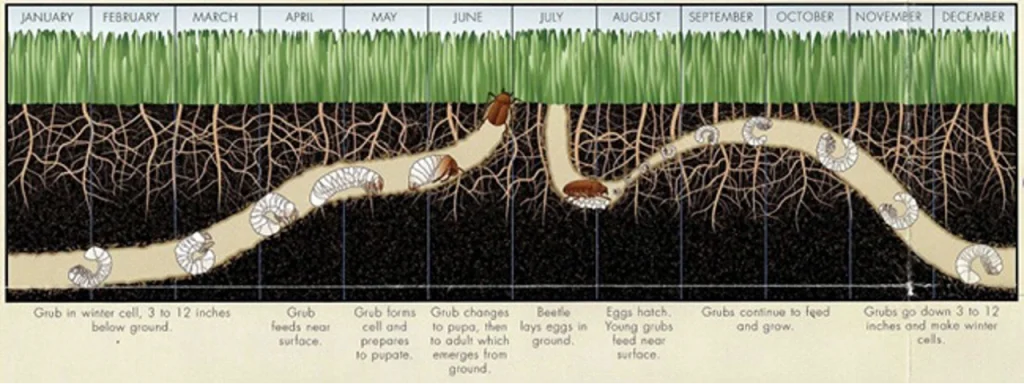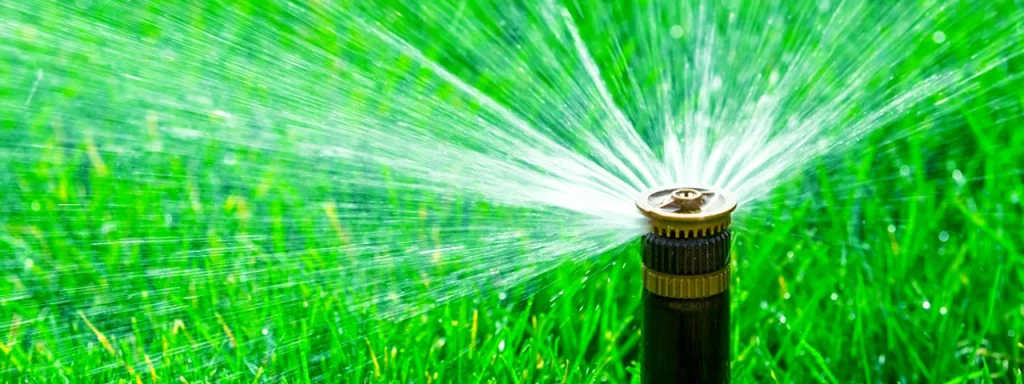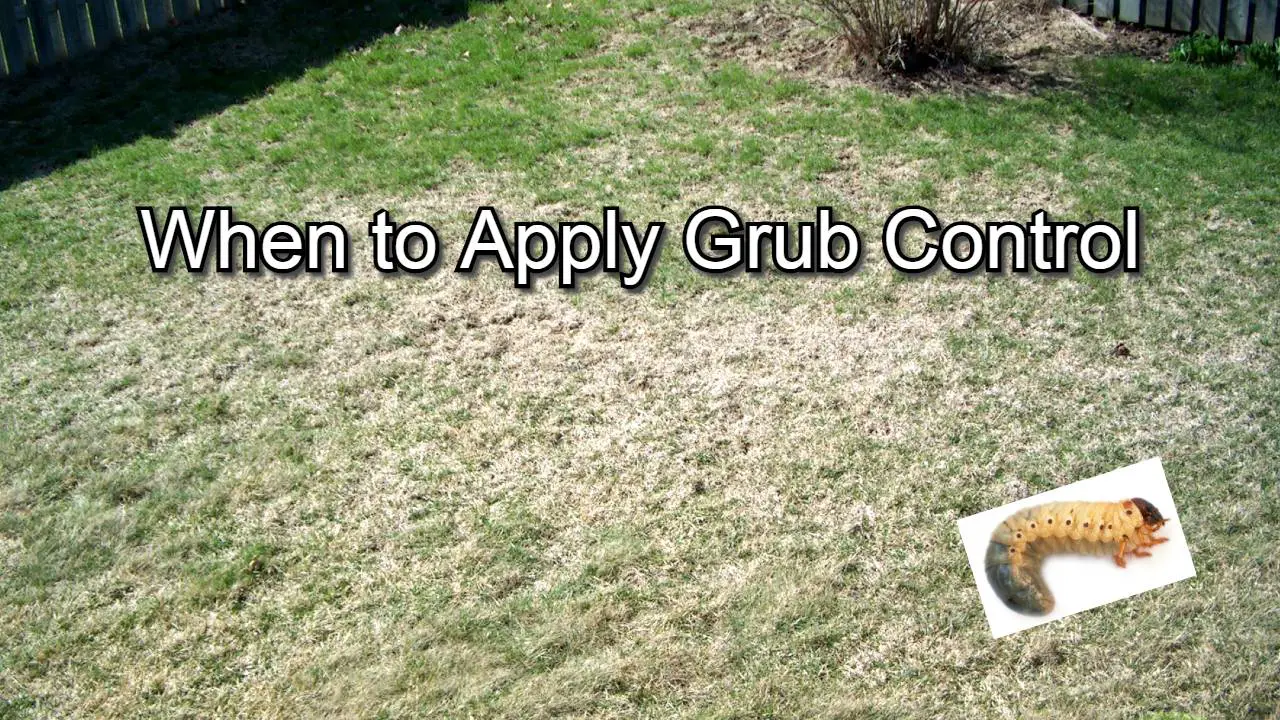Can’t figure out what is causing those brown patches on your lawn every summer? Consider checking for grubs, one of the main causes of severe lawn damage. Luckily, being a common problem, there is a common solution. Grub control is accessible both as an insecticide and a preventative treatment, and can easily take care of an infestation – when applied correctly. Putting down grub control at the right time is crucial if you want it to work. Read on to learn when is the best time to apply a grub killer or control on your lawn.
Grub control pesticides should be applied whenever signs of an active infestation first appear, usually later in the grasses’ growing season. If using a preventative treatment against grubs, aim to apply just before the grubs hatch – typically late spring or early summer.
Because grubs are the offspring of June bugs, Japanese beetles, or European Chafers, they often recur season after season. Using grub control may take a few seasons before the problem is entirely taken care of. If you have never encountered issues with these pests, there is no need to start using a yearly preventative.
The Best Time to Apply Grub Killer

The question of when to put down grub control can be answered only after defining the type of pesticide being used.
If you know your lawn already has a pest problem and this year, you want to nip it in the bud, and you might choose a grub preventer.
- Grub Preventer should be applied shortly before the grubs hatch – you may have noticed in previous summers when this was, due to sudden brown patches and lawn damage. As a rule, this is usually early summer, but take a look at our chart below for a more accurate timeline.
However, if you find yourself well into the growing season and have started to notice damage to your lawn due to grubs, it is too late for a preventative. At this point, you will need to apply a regular grub killer.
- Grub control, when applied correctly, will get rid of the pests it comes in contact with and therefore, can be applied anytime you notice the grubs are active. This usually coincides with your lawn’s growing season.
When to Apply Preventative Grub Control in your Zone [State]
| Zone 4 | Zone 5 | Zone 6 | Zone 7 | Zone 8 | |
| Month | July – August | Mid-June – early August | June – End of July | June – Mid July | May – June |
| State | Minnesota, Wisconsin, North & South Dakota | Iowa, Illinois, Michigan, Nebraska, New York, Pennsylvania | Kansas, Missouri, Kentucky, Ohio, | Oklahoma, Arkansas, Tennessee, Virginia, North Carolina | Texas, Mississippi, Louisiana, Alabama, Georgia, South Carolina |
The chart above can guide those who are unsure of when is the best time to apply preventative grub control. It is based on the temperatures of the different climate zones and how early the grubs hatch in the different regions.
For example, if you are wondering when is the best time to put down grub control in Illinois, the answer is somewhere between mid-June and early August.
Can You Apply Grub Killer Too Early?

Preventative grub control, like most pesticides, can contain harmful chemicals. Therefore, it is neither in your lawn’s or the environment’s best interest to be applied unnecessarily. If you apply grub control too early, the solution will soak too deep into the soil or wash away before the new grubs hatch and become vulnerable.
Grubs need to be hatched from their eggs before they are affected by a preventative insecticide. This is why timing is critical when applying a grub killer. Application of a preventative insecticide needs to happen close to when the eggs are hatching, which is within 10 days of the eggs being laid.
Although yes, you may have grubs that survived the winter and have hatched and are feeding in spring. For this, a regular grub killer for grubs post-hatching is fine to apply. But it will not necessarily prevent a second round from hatching.
Best Conditions for Applying Grub Control

At their most destructive, grubs are sitting just below the surface of the soil, happily munching on grassroots. This is why the number one most important thing to remember when applying a grub killer, whether preventative or not, is to water the solution in. This ensures the insecticide soaks into the soil instead of just sitting on top. In order to maintain the most control of the environment when applying:
- Dethatch (or rake away the dead grass) the affected area
- Apply the grub control on relatively dry soil
- Remember this is a chemical solution – always wear rubber gloves and follow the label
- Some rain in the forecast is okay, but a heavy rainfall may wash the solution away
- Water half and inch to an inch deep after applying
After Applying Grub Killer

Once the grub control is applied, it is essential to care properly for your lawn afterward and ensure the solution gets where it needs to be. Get a fertilizer to treat your lawn after the grub treatment is done. Because grubs thrive among the roots of the grass in the soil, the grub killer needs to be watered in.
This makes sure that the grub killer granules reach the roots instead of just sitting on top of the grass. It is recommended to water about half an inch over the treated area right away.
It is also important to monitor your lawn for grubs or other activities during the next week or so. If the grubs don’t appear to have died off, then you may need to reapply. Make sure always to read and follow the label, but it may be the case that you need a stronger dosage.
What to Look for When Buying Grub Killer
Not all insecticides will kill grubs – this is why grub control has its own process and timing. Ingredients such as lambda-cyhalothrin, gamma-cyhalothrin, bifenthrin, deltamethrin, cyfluthrin or permethrin are common in other insecticides, but will not work on grubs.
On the other hand, there are ingredients you should be looking for in a preventative grub killer:
- Imidacloprid
- Thiamethoxam
- Clothianidin
- and/or Chlorantraniloprole
And just these two ingredients if you need to kill larger, more mature grubs in spring or fall:
- Carbaryl
- trichlorfon
With the latter, it is a popular belief that application in the fall is more successful than in the spring. If you struggle with lawn damage from grubs this year, apply this in the fall and then a preventative treatment early next summer to try and end the breeding cycle.
When Not to Use Grub Control
First off, it is important to be sure that the issue at hand is grub worms! Brown patches or dead spots on lawns could be due to a number of factors. Drought or under-watering, high foot traffic, over-fertilization, or even a grass disease could be at fault. To be sure the culprit is grub worms, try to dig a few inches down in the affected area and see if there are grubs present.

Pesky grubs are only pests if they are resulting in lawn damage. If you have not experienced lawn damage in the form of dead patches that grow as the season progresses, there is no need to turn to chemical solutions against grubs. Grubs are a very common presence in lawns. In fact, a healthy, thriving lawn can withstand more than a few grub worms without danger of them showing visible damage.
Remember, a healthy lawn is always the best combatant against pests or infestations. A root system that is deep and thick is less likely to make room for invaders like grub worms. If they are an issue, hopefully, two to three treatments will do the trick.
It may take a few seasons to get the job done. Applying grub control year after year is an unnecessary waste of time, money, and energy if you no longer see damage from grub worms.
We recommend products from companies like Amazon, which we also get a small commission from, to keep this website running. However, we want to stress that all of the products we recommend are tested, used by us, and 100% unbiased and true.

